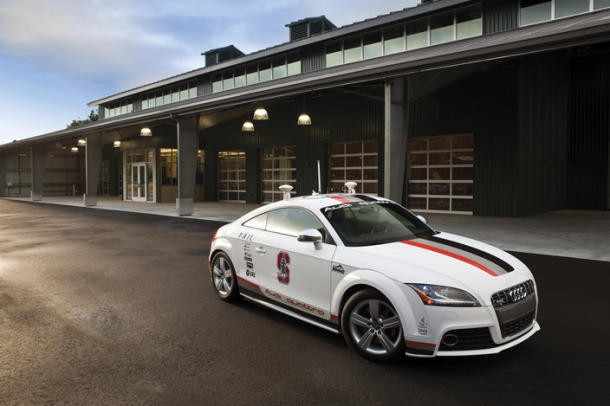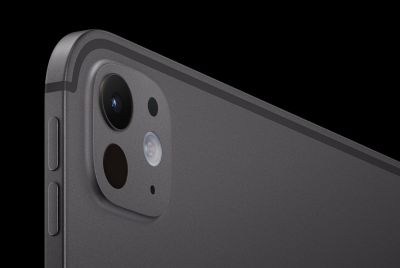CES 2013: Audi Shows Off Self-Parking Driverless Car
Joining Google and Lexus, Audi has shown off its attempt at a self-driving car at the CES trade show in Las Vegas, where parking prangs will be a thing of the past.

Follow all the latest news live from Las Vegas right here on our CES 2013: Live Blog
Demonstrated at a specially kitted-out carpark in Las Vegas, Audi has a modified A7 saloon which can go park itself, and even collect you once you're done shopping or visiting CES.
By using a vast array of sensors both on the car and the carpark itself, the A7 can be left at the entrance, where it will go and park itself; once you are done and return to the carpark, the Audi will come and collect you at the exit.
Sadly, that's as far as the car can drive itself - you'll have to take control once you leave the carpark - and the technology relies on its surroundings having the relevant sensors installed, so it won't work in any old parking bays.
By communicating over Wi-Fi with sensors embedded in the carpark, the A7 is aware of its precise location in relation to walls, obstacles, and empty spaces to park in.
Short of taking Google's approach of developing a fully automated car that is laden with sensors and can drive anywhere, Audi's "piloted driving" project has simpler goals, using less complex technology.
While the technology does work, it requires carpark owners to install sensors and for the system to work with pedestrians (presumably diving out of the way of a runaway car), various lighting and weather conditions, and other drivers - not to mention legal and insurance issues..
Self-parking cars aren't new, as Ford, Lexus and others have offered systems that can parallel park a car automatically for some time, so while an interesting proof of concept, the Audi A7 at CES doesn't take the technology much further than where it already is, leaving Google to make meaningful strides towards a truly autonomous car.
Away from interacting with carparks, Audi has also been busy working on a self-driving version of it's TT sportscar (pictured above), which can lap a racetrack that it has 'learned' almost as fast as a human driver, although this was not present at CES.
© Copyright IBTimes 2025. All rights reserved.






















